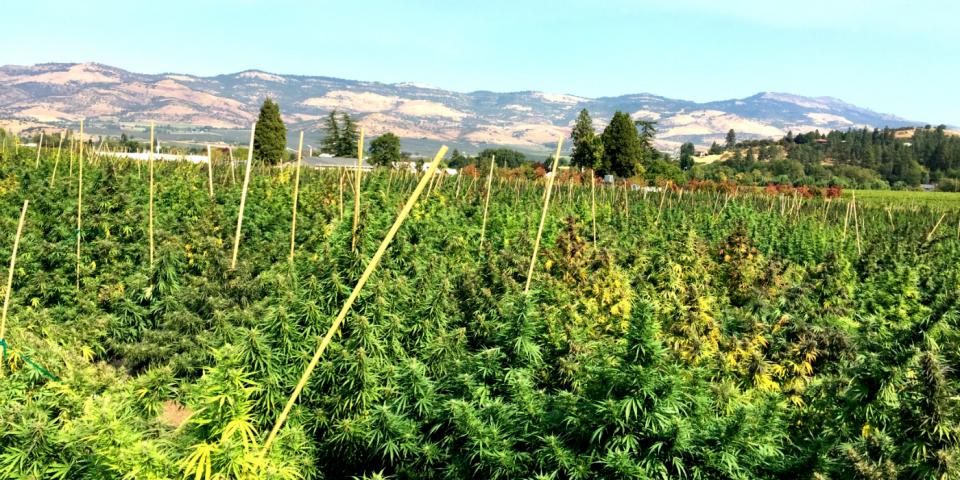December 20, 2018, will always be remembered as a historic day for the U.S. agricultural sector for it was then that industrial hemp was finally legalized, opening up new doors to those farmers willing to partake in the mounting CBD market. Until then, farming subsidies were vital for the survival of the farmers. The 2018 Farm Bill, though, has dramatically changed the landscape with greater profits deriving from the possibility of producing cannabidiol on a massive scale. “For the first time, we’re gonna see farmers becoming millionaires”, predicts Diggs Terra. Let’s do a quick recap of how the signing of the Agricultural Improvement Act of 2018 has affected the country during its first months of life.

A number of pilot hemp cultivation programs had been implemented since 2014 in several U.S. States but it wasn't until 2018 that Cannabis Sativa with THC levels lower than 0.3% went finally legal. High-CBD genetics have become increasingly popular during these last years as a result of a growing use of cannabidiol-based products. Its multiple therapeutic properties make it an excellent choice for the elaboration of medicinal oils and ointments. These are not the only booming products, though. CBD-rich and low-THC nuggets are also gaining momentum among cannabis users.
According to Diggs Terra, "There's a big portion of the community in the United States that don´t wanna partake in the psychoactive properties but are interested in the medicinal benefits of other cannabinoids such as CBD. They want to enjoy the high anti-inflammatory properties and receive the relaxing effect without the psychoactive properties." "So it´s opening up the door to a lot of people who before weren't as involved in the smoke culture or consumption of this product. Now many people are showing a lot of interest in that because now, with it being federally legal, there's a new system that's kind of designed to serve that populace", he claims.
Industrial hemp cultivation for fiber production
Hemp cultivation can fall into two categories, depending on the purpose it'll serve. We've got industrial hemp (fiber, seeds, livestock feeding…), listed in the Hemp Production Program by the Institute of Food and Agriculture, and CBD production for extracts and high-cannabidiol buds. Diggs Terra believes that these two groups will grow in different parts of the country. In the center of the country, where the majority of the corn is cultivated now, hemp fiber is going to slowly replace big portions of that production as hemp will become more used for different purposes.
Why such a slow pace? Corn farmers are currently subsidized by the U.S. government because the production costs are higher than the profits. So the government subsidizes basically to cover the loss. With hemp, subsidies will end for they'd engage in a large profitable business. That's why growers are slowly making the leap. Because of the subsidies. The difference in profit margins between one plant and the other is so big that "for the first time we're gonna see farmers becoming millionaires", says Diggs Terra.
Hemp cultivation for CBD production
The other category, the one involving the production of CBD, would happen in the states with the longest-running tradition of cannabis cultivation, like Oregon, which was, after Kentucky, the second state to allow hemp. And that's where some of the major CBD flower production companies are settled, one of the most important ones being Sovereign Fields, founded by HSO in collaboration with some other partners. They create genetics in the USA that serve the regulatory system for low-THC and high-CBD varieties.
The profits will be different from those of industrial hemp for two main reasons: firstly, the access to stable genetics that guarantee the excellent results and, secondly, the levels of CBD in the varieties used. The higher the CBD concentration, the higher the price.
So, considering that some of those flowers will be used for creating CBD extracts, growers will give serious consideration to the CBD levels in them in order to reap the best results. More or less like with corn or potatoes, where the higher the percentage of starch the bigger the profit.
The legalization of hemp is definitely changing the U.S. agricultural map. And, given the strength of the CBD market, it's expected to change even more, not only at the territorial level but also at the economic level.





Give us your feedback
Your rating (between 1 and 5)
1 2 3 4 5Leave a comment